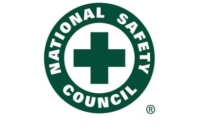The National Institute for Occupational Safety and Health's (NIOSH) Total Worker Health® (TWH) model will be the focus of a session at the American Society of Safety Professionals’ (ASSP) Seminarfest 2019 in Las Vegas.
About TWH
TWH is a holistic approach to well-being that integrates protection from work-related safety and health hazards with promotion of injury and illness prevention efforts. According to NIOSH, it acknowledges risk factors related to work that contribute to health problems previously considered unrelated to work and seeks to improve well-being in the American workforce for the benefit of workers, employers, and the nation.
“The Total Worker Health approach can help break down organizational silos and foster a more holistic view of employee well-being,” said ASSP Senior Vice President Deborah Roy, MPH, COHN-S, CSP, corporate director of health, safety and wellness at L.L.Bean. Roy who will lead the session on TWH at the Jan. 24-31 event.
From stress to sleeplessness
Traditional occupational safety and health protection programs have concentrated on ensuring that workers are protected from the harms that arise from work itself. Total Worker Health builds on this approach by recognizing that job-related factors such as wages, hours of work, workload and stress levels, interactions with coworkers and access to paid leave can all impact the well-being of workers, their families and their communities. Risk factors in the workplace can contribute to health problems previously considered unrelated to work, such as abnormal weight fluctuations, sleep disorders, cardiovascular disease and depression.
“Safety professionals need to understand that Total Worker Health is a more comprehensive view of what they do,” Roy said. “It’s important to focus on the broader mission and what can be done to positively impact a worker’s overall well-being.”
According to Roy, one of the most important aspects of Total Worker Health is its emphasis on collaboration and coordination. Depending on the organizational structure, it’s possible that safety professionals, human resource managers and occupational health professionals are not interacting on a regular basis.
Getting out of the silo
“If you’re in a large organization and you’re siloed and don’t talk to each other, then you don’t see opportunities,” Roy said. “You need to integrate with other areas of the business to effectively collaborate and develop a plan.”
Seminarfest 2019 will feature more than 90 courses from 40 expert facilitators, covering relevant safety industry topics. Learn more at: http://seminarfest.assp.org.



